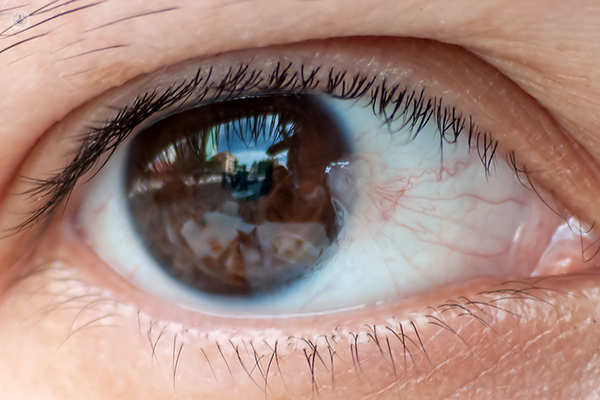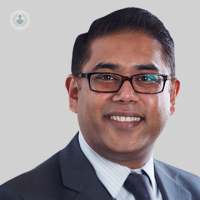What is pterygium and does it require surgery?
Escrito por:Professor Parwez Hossain, renowned ophthalmologist and expert in treating pterygium, explains in detail about this condition and when surgery should be considered.

What is pterygium?
Pterygium is an abnormal bump that can develop in the conjunctiva of the eye (i.e. the white of the eye), appearing as pink, fleshy tissue on the cornea. The bump usually develops on the side of the eye nearest to the nose and grows slowly as the person ages.
Common symptoms of pterygium can include itchiness, inflammation, a gritty feeling and sometimes, distorted vision.
What is the prevalence?
Depending on the population, the prevalence of pterygium ranges from 1-15%, therefore, it is a fairly common eye condition.
What are the risk factors?
The main risk factors associated with pterygium are:
- Exposure to UV light
- Increasing age
When is pterygium surgery required?
Surgery would be considered depending on the following factors:
- Whether or not there is any malignant change
- Whether or not there is any ocular irritation
- The cosmetic appearance
Malignant changes
In some patients with pterygium, it is necessary to check for the possibility of cancerous cells. If the patient’s pterygium has a gelatinous appearance or is surrounded by translucent tissue, it could be indicative of carcinoma in situ (Bowen’s disease).

Can pterygium be prevented?
Whilst there is no certain method of prevention, you can reduce your risk of developing this eye condition by limiting your exposure to UV light, dry and dusty environments. If you are regularly in such environments and spend a lot of time outdoors, you should be sure to wear protective eyewear that has good UV blockage. For example, sunglasses that have a wrap-around fit are very good at protecting the eyes from radiation and airborne pollution.
When should pterygium be operated on?
In the past, surgery was only ever undertaken if it was absolutely necessary due to the high recurrence rate following the operation.
In the last decade, there have been several significant improvements in the outcomes of pterygium surgery and a reduction in recurrence rates. This has meant that surgery is now considered earlier in the development and growth of pterygium than it was previously.
Additionally, even if a patient’s pterygium is small, if it is causing ocular irritation or is considered unsightly, then surgery will be considered.
What are the risks of pterygium surgery?
The main problems associated with pterygium surgery include:
- Recurrence rates
- Scarring
- Surgically-induced astigmatism
- Uncorrected vision


